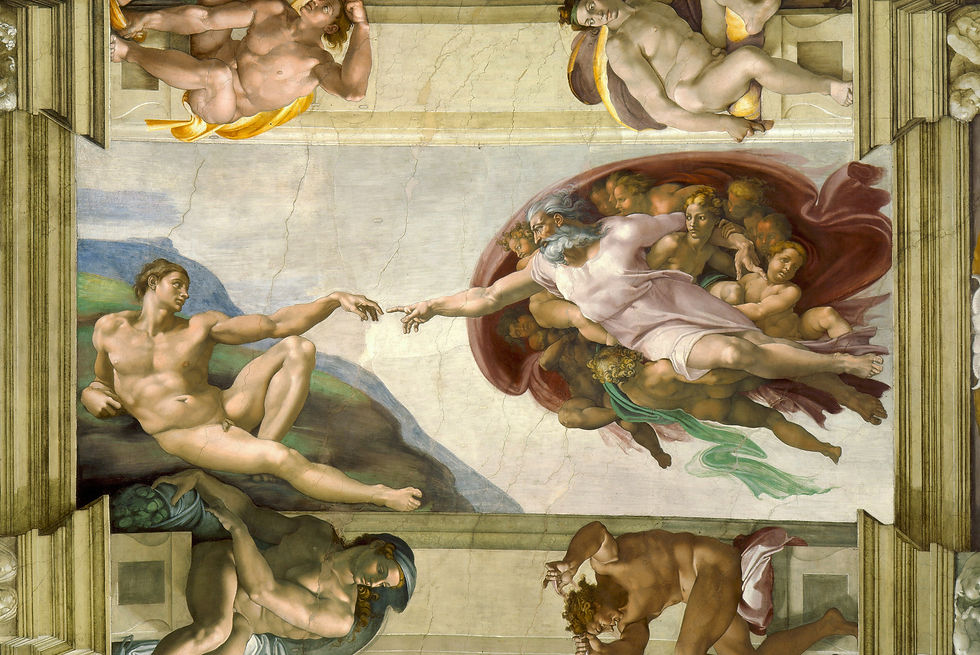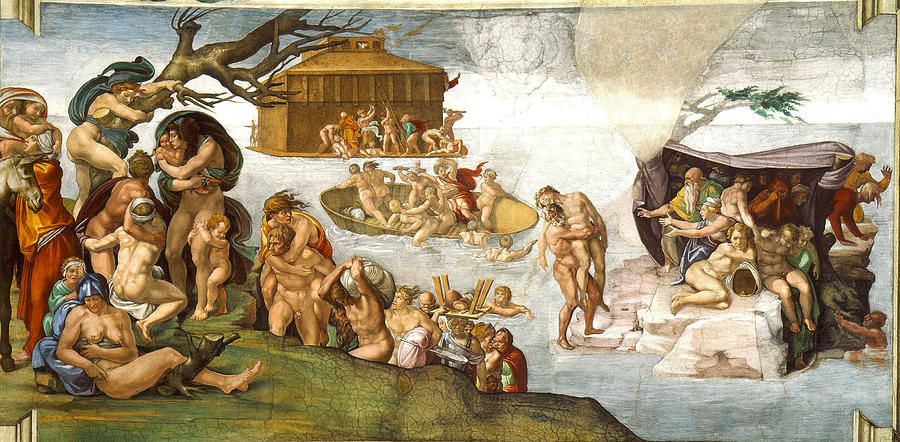Michelangelo and his celebrated frescoes in the Sistine Chapel
- studio adda
- Jun 26
- 4 min read


Michelangelo was a famous Italian sculptor, painter, architect and poet, also known as ‘Il Divino’- The Divine one who was born in the Republic of Florence and was considered as the key figure of the Renaissance Period. He was an extremely religious man and his thoughts can be seen in all his forms of artwork. Michelangelo’s two of the best known works, the Pieta and David were sculpted before he turned the age of 30 (Image 1 and Image 2) and hence are an example of his exceptional sculpting and art skills.

After 70 years of his career in sculpting, he was commissioned to paint the ceilings of the Sistine Chapel by Pope Julius in 1508. According to Giorgio Vasari, Julius II had given such a lofty task to Michelangelo on the suggestion of his two rivals, the painter Raphael and the architect Donato Bramante. Vasari said that the two hoped that Michelangelo would fall flat, since he was less accustomed to painting than he was to sculpting, or alternatively he would grow so irritated with Julius that he would depart from Rome altogether.

Sistine Chapel is one of the most spectacular chapel in the world which was built in 1479 under the direction of Pope Sixtus IV. This chapel is used to celebrate important festivals and for ‘Papal Conclave’. The height of this chapel is more than 70ft with curved roofs. Painting this curved ceiling was one gigantic task given to Michelangelo and he accomplished the task by creating the finest masterpiece of the Western World. Painting this curved ceiling was one laborious task given to Michelangelo for which he found a solution to paint the ceilings and created a special scaffolding. Rather than building the structure from the floor up, he installed a wooden platform held up by brackets inserted into holes in the wall. As he completed the painting in stages, the scaffolding was designed to move across the chapel.(Image 3, Image 4 and Image 5)


The frescoes on the ceilings were drawn in such a manner that it showed the connection between the Old Testament and New Testaments. The center of the ceilings is composed of the 9 scenes from the Book of Genesis which is a part of the Old Testament. These panels are surrounded by portraits of important individuals from the Bible. In total, 343 figures were incorporated into the scenes. These include characters from well-known narratives—including the story of Adam and Eve and the Great Flood—as well as Jesus’s ancestors, those who predicted his birth and Ignudi, and also nude males. (Image 6, Image 7, Image 8, Image 9, Image 10, Image 11, Image 12 and Image 13).








While praising this beautiful artwork, one learns that Michelangelo was a highly skilled artist who had deep knowledge about the anatomy of the human body. This can be interpreted from the monumental figures he painted that embody beauty and strength which were influenced by Belvedere Torso and Lacoon & Sons. (Image 14 and Image 15)


It was Michelangelo who designed God. The stereotypical depiction of God as a wise old man with long white hair and a beard can be traced back to the ceiling of the chapel. Before Michelangelo, God was usually depicted as a hand coming down from the clouds, and this was the first time God had been depicted in such a dynamic way.(Image 16)

All of Michelangelo’s work on the ceiling is now over 500 years old and so it has been necessary to continuously protect these frescoes and the plaster work from all the natural causes as well as enthusiastic tourists who have been flocking to the Chapel for centuries. There has also been restoration work during recent times to remove darkening effects from natural elements that can never be entirely guarded against. The nature of this large artwork also meant that it was harder to tend to as compared to a standard painting or sculpture.
The art within the Sistine Chapel, which also includes work by many other notable Italian artists, underlines the wealth and status of the Pope and Christianity itself at that time. Quite simply, it could attract and afford commissions from the finest of the artists of that era and Michelangelo was clearly at the top of that list.
(This blog is a compilation of various sources and lectures attended at CSMVS, Mumbai)
Written by – Ishwari Khandelwal, studio adda research Intern.




Comments